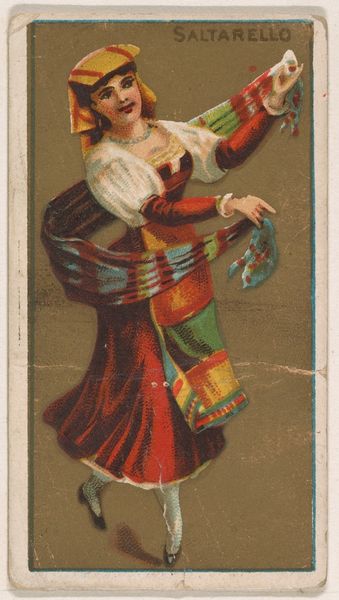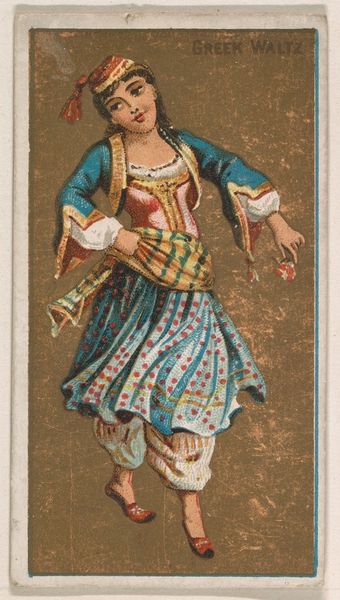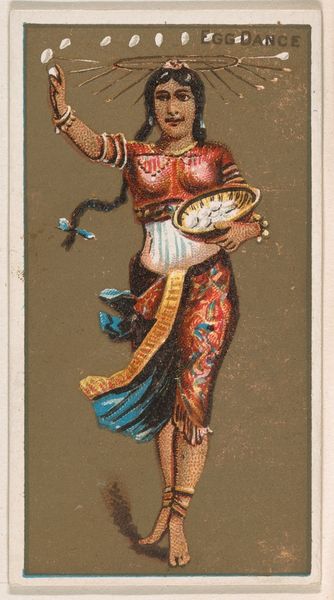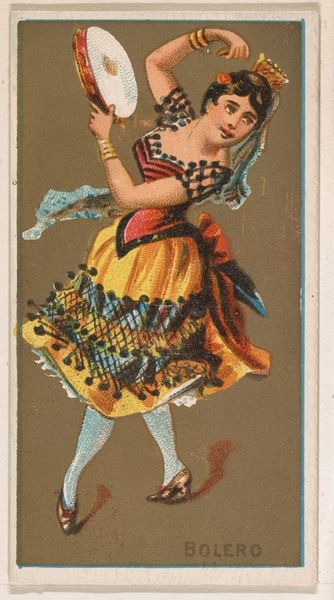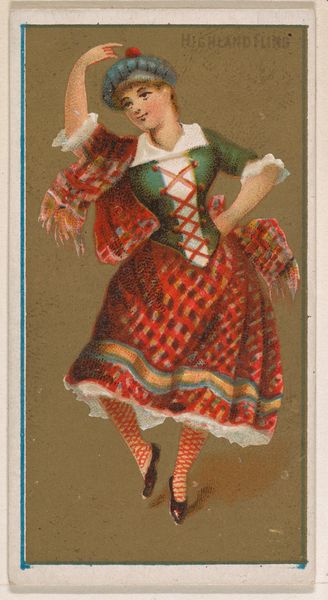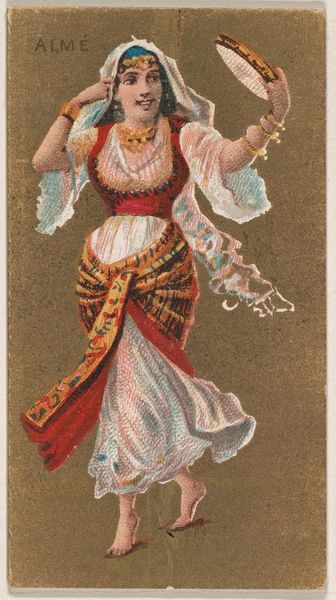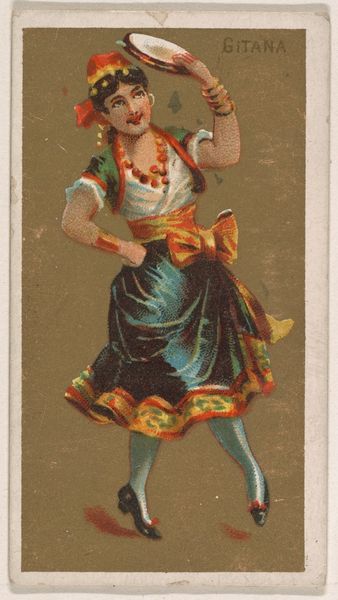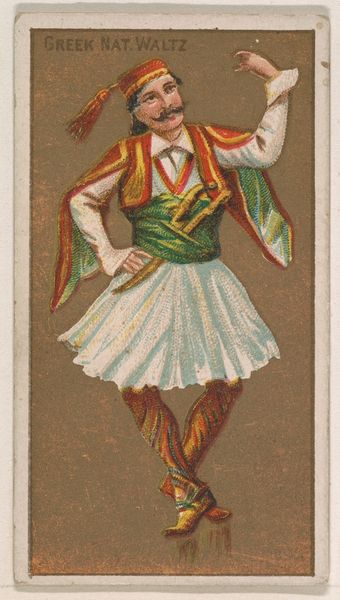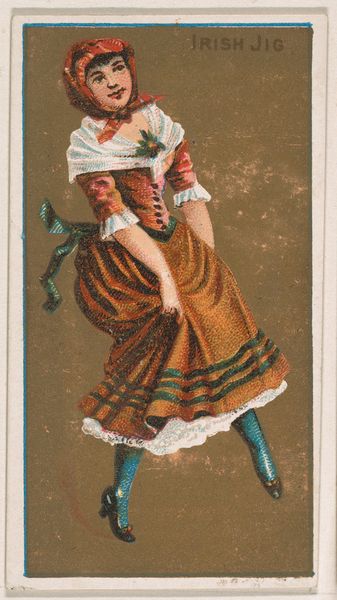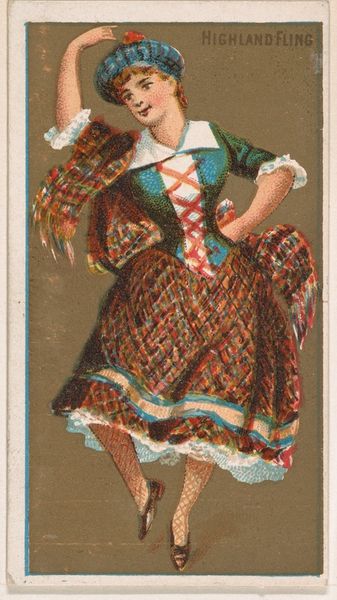
Saltarello, from National Dances (N225, Type 1) issued by Kinney Bros. 1889
0:00
0:00
drawing, lithograph, print
#
drawing
#
art-nouveau
#
lithograph
# print
#
figuration
#
naive art
#
men
#
watercolour illustration
#
genre-painting
#
watercolor
Dimensions: Sheet: 2 3/4 × 1 1/2 in. (7 × 3.8 cm)
Copyright: Public Domain
Curator: Oh, it's so charming! It just throws me back to simpler times. A bit old-fashioned, sure, but full of such exuberant life, wouldn't you agree? Editor: Yes, and looking at the context enriches the viewing experience. What we have here is "Saltarello, from National Dances" created around 1889 by Kinney Brothers Tobacco Company. These cards, mixing lithography and drawing, served as inserts in cigarette packages. Consider the confluence of cultural marketing, class, and gender performance in the late 19th century, when national identity became bound with commodity culture. Curator: Wow. See, I was just seeing the pretty colors and that wonderful swish of the dancer’s scarf – makes you almost hear the music, doesn't it? All bright shades...But you've just made me think about how very deliberate that joy is – probably to distract smokers from, you know, smoking. I do appreciate that the pose, captured so perfectly in watercolor, suggests someone thoroughly in command of their movement, really inhabiting it. It's not every day you find that strength coupled with this level of perceived vulnerability in women depicted from this era! Editor: Exactly, but it's a constructed, marketable image of this vulnerability. Think of this card as a microcosm of societal values, carefully designed to appeal and persuade. It also begs questions about the representation of folk traditions, appropriated, stylized, and packaged for mass consumption. There’s a certain exoticization at play, as if cultural vibrancy is flattened into a neat, collectable square. The question then becomes who profits, and how, from such representation. Curator: It does make you wonder about all that. I guess beneath the appealing artwork lies all sorts of socio-economic power plays. Though you’ve managed to thoroughly dismantle all my naive pleasure in a single take! No, I'm teasing...mostly. Still a sweet little artifact though, I think! Editor: Of course. Recognizing that inherent complexity allows us to ask questions, consider its relationship to our world and cultural legacies, not just passively absorb it. We see how art, even the art tucked inside a pack of cigarettes, operates.
Comments
No comments
Be the first to comment and join the conversation on the ultimate creative platform.
